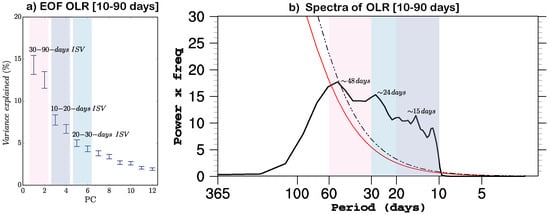Journal Description
Meteorology
Meteorology
is an international, peer-reviewed, open access journal on atmospheric science published quarterly online by MDPI.
- Open Access— free for readers, with article processing charges (APC) paid by authors or their institutions.
- Rapid Publication: manuscripts are peer-reviewed and a first decision is provided to authors approximately 28.3 days after submission; acceptance to publication is undertaken in 6.8 days (median values for papers published in this journal in the second half of 2023).
- Recognition of Reviewers: APC discount vouchers, optional signed peer review, and reviewer names published annually in the journal.
- Meteorology is a companion journal of Atmosphere.
Latest Articles
Tropical and Subtropical South American Intraseasonal Variability: A Normal-Mode Approach
Meteorology 2024, 3(2), 141-160; https://doi.org/10.3390/meteorology3020007 - 25 Mar 2024
Abstract
►
Show Figures
Instead of using the traditional space-time Fourier analysis of filtered specific atmospheric fields, a normal-mode decomposition method was used to analyze South American intraseasonal variability (ISV). Intraseasonal variability was examined separately in the 30–90-day band, 20–30-day band, and 10–20-day band. The most characteristic
[...] Read more.
Instead of using the traditional space-time Fourier analysis of filtered specific atmospheric fields, a normal-mode decomposition method was used to analyze South American intraseasonal variability (ISV). Intraseasonal variability was examined separately in the 30–90-day band, 20–30-day band, and 10–20-day band. The most characteristic structure in the intraseasonal time-scale, in the three bands, was the dipole-like convection between the South Atlantic Convergence Zone (SACZ) and the central-east South America (CESA) region. In the 30–90-day band, the convective and circulation patterns were modulated by the large-scale Madden–Julian oscillation (MJO). In the 20–30-day and 10–20-day bands, the convection structures were primarily controlled by extratropical Rossby wave trains. The normal-mode decomposition of reanalysis data based on 30–90-day, 20–30-day, and 10–20-day ISV showed that the tropospheric circulation and CESA–SACZ convective structure observed over South America were dominated by rotational modes (i.e., Rossby waves, mixed Rossby-gravity waves). A considerable portion of the 30–90-day ISV was also associated with the inertio-gravity (IGW) modes (e.g., Kelvin waves), mainly prevailing during the austral rainy season. The proposed decomposition methodology demonstrated that a realistic circulation can be reproduced, giving a powerful tool for diagnosing and studying the dynamics of waves and the interactions between them in terms of their ability to provide causal accounts of the features seen in observations.
Full article
Open AccessArticle
System for Analysis of Wind Collocations (SAWC): A Novel Archive and Collocation Software Application for the Intercomparison of Winds from Multiple Observing Platforms
by
Katherine E. Lukens, Kevin Garrett, Kayo Ide, David Santek, Brett Hoover, David Huber, Ross N. Hoffman and Hui Liu
Meteorology 2024, 3(1), 114-140; https://doi.org/10.3390/meteorology3010006 - 07 Mar 2024
Abstract
Accurate atmospheric 3D wind observations are one of the top priorities for the global scientific community. To address this requirement, and to support researchers’ needs to acquire and analyze wind data from multiple sources, the System for Analysis of Wind Collocations (SAWC) was
[...] Read more.
Accurate atmospheric 3D wind observations are one of the top priorities for the global scientific community. To address this requirement, and to support researchers’ needs to acquire and analyze wind data from multiple sources, the System for Analysis of Wind Collocations (SAWC) was jointly developed by NOAA/NESDIS/STAR, UMD/ESSIC/CISESS, and UW-Madison/CIMSS. SAWC encompasses the following: a multi-year archive of global 3D winds observed by Aeolus, sondes, aircraft, stratospheric superpressure balloons, and satellite-derived atmospheric motion vectors, archived and uniformly formatted in netCDF for public consumption; identified pairings between select datasets collocated in space and time; and a downloadable software application developed for users to interactively collocate and statistically compare wind observations based on their research needs. The utility of SAWC is demonstrated by conducting a one-year (September 2019–August 2020) evaluation of Aeolus level-2B (L2B) winds (Baseline 11 L2B processor version). Observations from four archived conventional wind datasets are collocated with Aeolus. The recommended quality controls are applied. Wind comparisons are assessed using the SAWC collocation application. Comparison statistics are stratified by season, geographic region, and Aeolus observing mode. The results highlight the value of SAWC’s capabilities, from product validation through intercomparison studies to the evaluation of data usage in applications and advances in the global Earth observing architecture.
Full article
(This article belongs to the Special Issue Early Career Scientists' (ECS) Contributions to Meteorology (2023))
►▼
Show Figures
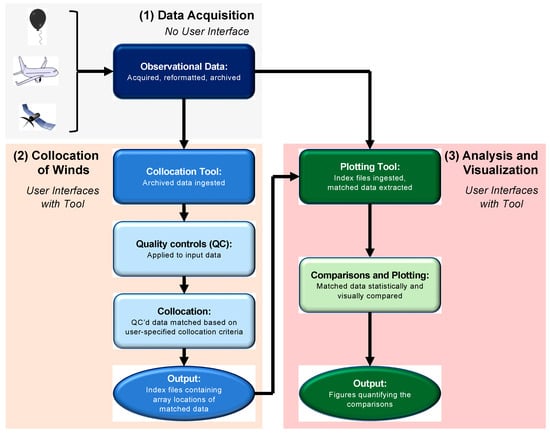
Figure 1
Open AccessArticle
Idealized Simulations of a Supercell Interacting with an Urban Area
by
Jason Naylor, Megan E. Berry and Emily G. Gosney
Meteorology 2024, 3(1), 97-113; https://doi.org/10.3390/meteorology3010005 - 07 Mar 2024
Abstract
Idealized simulations with a cloud-resolving model are conducted to examine the impact of a simplified city on the structure of a supercell thunderstorm. The simplified city is created by enhancing the surface roughness length and/or surface temperature relative to the surroundings. When the
[...] Read more.
Idealized simulations with a cloud-resolving model are conducted to examine the impact of a simplified city on the structure of a supercell thunderstorm. The simplified city is created by enhancing the surface roughness length and/or surface temperature relative to the surroundings. When the simplified city is both warmer and has larger surface roughness relative to its surroundings, the supercell that passes over it has a larger updraft helicity (at both midlevels and the surface) and enhanced precipitation and hail downwind of the city, all relative to the control simulation. The storm environment within the city has larger convective available potential energy which helps stimulate stronger low-level updrafts. Storm relative helicity (SRH) is actually reduced over the city, but enhanced in a narrow band on the northern edge of the city. This band of larger SRH is ingested by the primary updraft just prior to passing over the city, corresponding with enhancement to the near-surface mesocyclone. Additional simulations in which the simplified city is altered by removing either the heat island or surface roughness length gradient reveal that the presence of a heat island is most closely associated with enhancements in updraft helicity and low-level updrafts relative to the control simulation.
Full article
(This article belongs to the Topic Numerical Models and Weather Extreme Events)
►▼
Show Figures
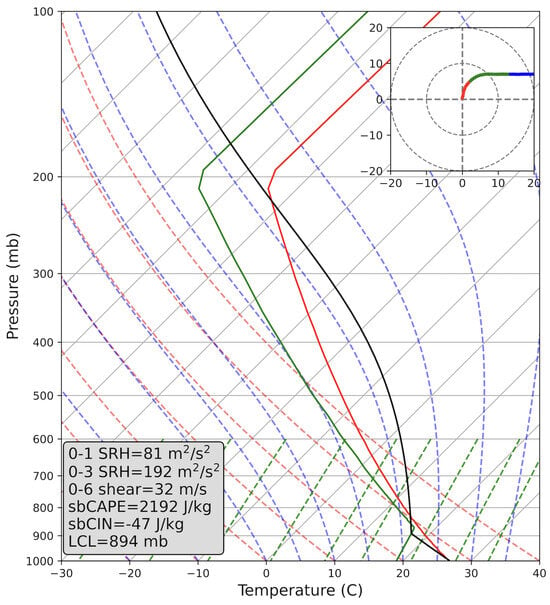
Figure 1
Open AccessArticle
On the Human Thermal Load in Fog
by
Erzsébet Kristóf, Ferenc Ács and Annamária Zsákai
Meteorology 2024, 3(1), 83-96; https://doi.org/10.3390/meteorology3010004 - 06 Feb 2024
Abstract
We characterized the thermal load of a person walking and/or standing in the fog by analyzing the thermal resistance of clothing, rcl, and operative temperature, To. The rcl–To model applies to individuals using weather data. The
[...] Read more.
We characterized the thermal load of a person walking and/or standing in the fog by analyzing the thermal resistance of clothing, rcl, and operative temperature, To. The rcl–To model applies to individuals using weather data. The body mass index and basal metabolic flux density values of the person analyzed in this study are 25 kg m−2 and 40 W m−2, respectively. Weather data are taken from the nearest automatic weather station. We observed 146 fog events in the period 2017–2024 in Martonvásár (Hungary’s Great Plain region, Central Europe). The main results are as follows: (1) The rcl and To values were mostly between 2 and 0.5 clo and −4 and 16 °C during fog events, respectively. (2) The largest and smallest rcl and To values were around 2.5 and 0 clo and −7 and 22 °C, respectively. (3) The rcl differences resulting from interpersonal and wind speed variability are comparable, with a maximum value of around 0.5–0.7 clo. (4) Finally, rcl values are significantly different for standing and walking persons. At the very end, we can emphasize that the thermal load of the fog depends noticeably on the person’s activity and anthropometric characteristics.
Full article
(This article belongs to the Special Issue Early Career Scientists' (ECS) Contributions to Meteorology (2023))
►▼
Show Figures
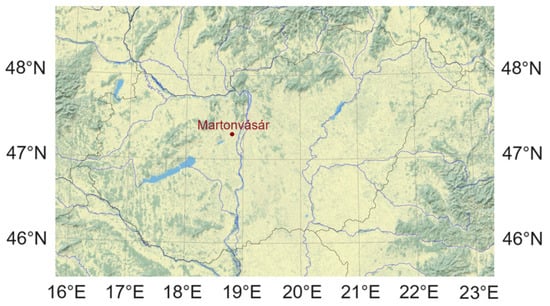
Figure 1
Open AccessArticle
A Wind Field Reconstruction from Numerical Weather Prediction Data Based on a Meteo Particle Model
by
Edoardo Bucchignani
Meteorology 2024, 3(1), 70-82; https://doi.org/10.3390/meteorology3010003 - 29 Jan 2024
Abstract
►▼
Show Figures
In the present work, a methodology for wind field reconstruction based on the Meteo Particle model (MPM) from numerical weather prediction (NWP) data is presented. The development of specific wind forecast services is a challenging research topic, in particular for what concerns the
[...] Read more.
In the present work, a methodology for wind field reconstruction based on the Meteo Particle model (MPM) from numerical weather prediction (NWP) data is presented. The development of specific wind forecast services is a challenging research topic, in particular for what concerns the availability of accurate local weather forecasts in highly populated areas. Currently, even if NWP limited area models (LAMs) are run at a spatial resolution of about 1 km, this level of information is not sufficient for many applications; for example, to support drone operation in urban contexts. The coupling of the MPM with the NWP limited area model COSMO has been implemented in such a way that the MPM reads the NWP output over a selected area and provides wind values for the generic point considered for the investigation. The numerical results obtained reveal the good behavior of the method in reproducing the general trend of the wind speed, as also confirmed by the power spectra analysis. The MPM is able to step over the intrinsic limitations of the NWP model in terms of the spatial and temporal resolution, even if the MPM inherits the bias that inevitably affects the COSMO output.
Full article
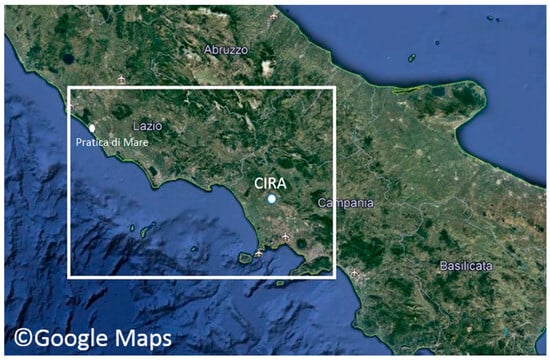
Figure 1
Open AccessArticle
The Impact of the Tropical Sea Surface Temperature Variability on the Dynamical Processes and Ozone Layer in the Arctic Atmosphere
by
Andrew R. Jakovlev and Sergei P. Smyshlyaev
Meteorology 2024, 3(1), 36-69; https://doi.org/10.3390/meteorology3010002 - 22 Jan 2024
Abstract
Tropical sea surface temperature (SST) variability, mainly driven by the El Niño–Southern Oscillation (ENSO), influences the atmospheric circulation and hence the transport of heat and chemical species in both the troposphere and stratosphere. This paper uses Met Office, ERA5 and MERRA2 reanalysis data
[...] Read more.
Tropical sea surface temperature (SST) variability, mainly driven by the El Niño–Southern Oscillation (ENSO), influences the atmospheric circulation and hence the transport of heat and chemical species in both the troposphere and stratosphere. This paper uses Met Office, ERA5 and MERRA2 reanalysis data to examine the impact of SST variability on the dynamics of the polar stratosphere and ozone layer over the period from 1980 to 2020. Particular attention is paid to studying the differences in the influence of different types of ENSO (East Pacific (EP) and Central Pacific (CP)) for the El Niño and La Niña phases. It is shown that during the CP El Niño, the zonal wind weakens more strongly and changes direction more often than during the EP El Niño, and the CP El Niño leads to a more rapid decay of the polar vortex (PV), an increase in stratospheric air temperature and an increase in the concentration and total column ozone than during EP El Niño. For the CP La Niña, the PV is more stable, which often leads to a significant decrease in Arctic ozone. During EP La Niña, powerful sudden stratospheric warming events are often observed, which lead to the destruction of PV and an increase in column ozone.
Full article
(This article belongs to the Special Issue Early Career Scientists' (ECS) Contributions to Meteorology (2023))
►▼
Show Figures
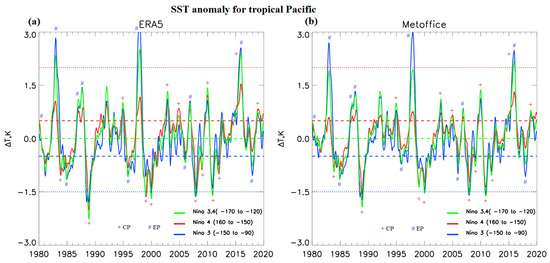
Figure 1
Open AccessArticle
A Data-Driven Study of the Drivers of Stratospheric Circulation via Reduced Order Modeling and Data Assimilation
by
Julie Sherman, Christian Sampson, Emmanuel Fleurantin, Zhimin Wu and Christopher K. R. T. Jones
Meteorology 2024, 3(1), 1-35; https://doi.org/10.3390/meteorology3010001 - 19 Dec 2023
Abstract
Stratospheric dynamics are strongly affected by the absorption/emission of radiation in the Earth’s atmosphere and Rossby waves that propagate upward from the troposphere, perturbing the zonal flow. Reduced order models of stratospheric wave–zonal interactions, which parameterize these effects, have been used to study
[...] Read more.
Stratospheric dynamics are strongly affected by the absorption/emission of radiation in the Earth’s atmosphere and Rossby waves that propagate upward from the troposphere, perturbing the zonal flow. Reduced order models of stratospheric wave–zonal interactions, which parameterize these effects, have been used to study interannual variability in stratospheric zonal winds and sudden stratospheric warming (SSW) events. These models are most sensitive to two main parameters:
(This article belongs to the Special Issue Early Career Scientists' (ECS) Contributions to Meteorology (2023))
►▼
Show Figures
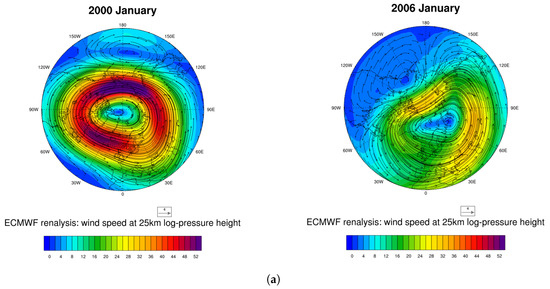
Figure 1
Open AccessArticle
Comparison Link Function from Summer Rainfall Network in Amazon Basin
by
C. Arturo Sánchez P., Alan J. P. Calheiros, Sâmia R. Garcia and Elbert E. N. Macau
Meteorology 2023, 2(4), 530-546; https://doi.org/10.3390/meteorology2040030 - 13 Dec 2023
Abstract
The Amazon Basin is the largest rainforest in the world, and studying the rainfall in this region is crucial for understanding the functioning of the entire rainforest ecosystem and its role in regulating the regional and global climate. This work is part of
[...] Read more.
The Amazon Basin is the largest rainforest in the world, and studying the rainfall in this region is crucial for understanding the functioning of the entire rainforest ecosystem and its role in regulating the regional and global climate. This work is part of the application of complex networks, which refer to a network modeled by graphs and are characterized by their high versatility, as well as the extraction of key information from the system under study. The main objective of this article is to examine the precipitation system in the Amazon basin during the austral summer. The networks are defined by nodes and connections, where each node represents a precipitation time series, while the connections can be represented by different similarity functions. For this study, three rainfall networks were created, which differ based on the correlation function used (Pearson, Spearman, and Kendall). By comparing these networks, we can identify the most effective method for analyzing the data and gain a better understanding of rainfall’s spatial structure, thereby enhancing our knowledge of its impact on different Amazon basin regions. The results reveal the presence of three important regions in the Amazon basin. Two areas were identified in the northeast and northwest, showing incursions of warm and humid winds from the oceans and favoring the occurrence of large mesoscale systems, such as squall lines. Additionally, the eastern part of the central Andes may indicate an outflow region from the basin with winds directed toward subtropical latitudes. The networks showed a high level of activity and participation in the center of the Amazon basin and east of the Andes. Regarding information transmission, the betweenness centrality identified the main pathways within a basin, and some of these are directly related to certain rivers, such as the Amazon, Purus, and Madeira. Indicating the relationship between rainfall and the presence of water bodies. Finally, it suggests that the Spearman and Kendall correlation produced the most promising results. Although they showed similar spatial patterns, the major difference was found in the identification of communities, this is due to the meridional differences in the network’s response. Overall, these findings highlight the importance of carefully selecting appropriate techniques and methods when analyzing complex networks.
Full article
(This article belongs to the Special Issue Early Career Scientists' (ECS) Contributions to Meteorology (2023))
►▼
Show Figures
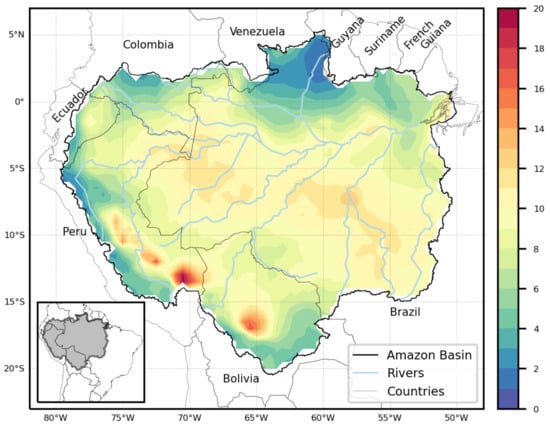
Figure 1
Open AccessArticle
CanStoc: A Hybrid Stochastic–GCM System for Monthly, Seasonal and Interannual Predictions
by
Shaun Lovejoy and Lenin Del Rio Amador
Meteorology 2023, 2(4), 509-529; https://doi.org/10.3390/meteorology2040029 - 07 Dec 2023
Abstract
►▼
Show Figures
Beyond their deterministic predictability limits of ≈10 days and 6 months, the atmosphere and ocean become effectively stochastic. This has led to the development of stochastic models specifically for this macroweather regime. A particularly promising approach is based on the Fractional Energy Balance
[...] Read more.
Beyond their deterministic predictability limits of ≈10 days and 6 months, the atmosphere and ocean become effectively stochastic. This has led to the development of stochastic models specifically for this macroweather regime. A particularly promising approach is based on the Fractional Energy Balance Equation (FEBE), an update of the classical Budyko–Sellers energy balance approach. The FEBE has scaling symmetries that imply long memories, and these are exploited in the Stochastic Seasonal and Interannual Prediction System (StocSIPS). Whereas classical long-range forecast systems are initial value problems based on spatial information, StocSIPS is a past value problem based on (long) series at each pixel. We show how to combine StocSIPS with a classical coupled GCM system (CanSIPS) into a hybrid system (CanStoc), the skill of which is better than either. We show that for one-month lead times, CanStoc’s skill is particularly enhanced over either CanSIPS or StocSIPS, whereas for 2–3-month lead times, CanSIPS provides little extra skill. As expected, the CanStoc skill is higher over ocean than over land with some seasonal dependence. From the classical point of view, CanStoc could be regarded as a post-processing technique. From the stochastic point of view, CanStoc could be regarded as a way of harnessing extra skill at the submonthly scales in which StocSIPS is not expected to apply.
Full article
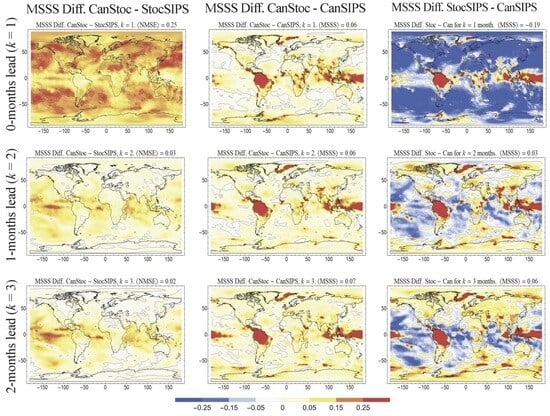
Graphical abstract
Open AccessArticle
The Relationships between Adverse Weather, Traffic Mobility, and Driver Behavior
by
Ayman Elyoussoufi, Curtis L. Walker, Alan W. Black and Gregory J. DeGirolamo
Meteorology 2023, 2(4), 489-508; https://doi.org/10.3390/meteorology2040028 - 19 Nov 2023
Abstract
Adverse weather conditions impact mobility, safety, and the behavior of drivers on roads. In an average year, approximately 21% of U.S. highway crashes are weather-related. Collectively, these crashes result in over 5300 fatalities each year. As a proof-of-concept, analyzing weather information in the
[...] Read more.
Adverse weather conditions impact mobility, safety, and the behavior of drivers on roads. In an average year, approximately 21% of U.S. highway crashes are weather-related. Collectively, these crashes result in over 5300 fatalities each year. As a proof-of-concept, analyzing weather information in the context of traffic mobility data can provide unique insights into driver behavior and actions transportation agencies can pursue to promote safety and efficiency. Using 2019 weather and traffic data along Colorado Highway 119 between Boulder and Longmont, this research analyzed the relationship between adverse weather and traffic conditions. The data were classified into distinct weather types, day of the week, and the direction of travel to capture commuter traffic flows. Novel traffic information crowdsourced from smartphones provided metrics such as volume, speed, trip length, trip duration, and the purpose of travel. The data showed that snow days had a smaller traffic volume than clear and rainy days, with an All Times volume of approximately 18,000 vehicles for each direction of travel, as opposed to 21,000 vehicles for both clear and wet conditions. From a trip purpose perspective, the data showed that the percentage of travel between home and work locations was 21.4% during a snow day compared to 20.6% for rain and 19.6% for clear days. The overall traffic volume reduction during snow days is likely due to drivers deciding to avoid commuting; however, the relative increase in the home–work travel percentage is likely attributable to less discretionary travel in lieu of essential work travel. In comparison, the increase in traffic volume during rainy days may be due to commuters being less likely to walk, bike, or take public transit during inclement weather. This study demonstrates the insight into human behavior by analyzing impact on traffic parameters during adverse weather travel.
Full article
(This article belongs to the Special Issue Early Career Scientists' (ECS) Contributions to Meteorology (2023))
►▼
Show Figures
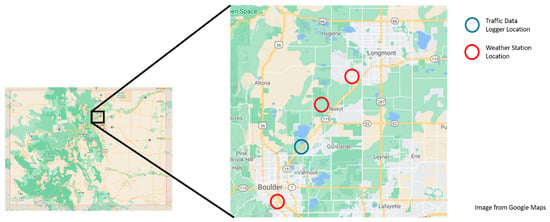
Figure 1
Open AccessArticle
Specific Features of the Land-Sea Contrast of Cloud Liquid Water Path in Northern Europe as Obtained from the Observations by the SEVIRI Instrument: Artefacts or Reality?
by
Vladimir S. Kostsov and Dmitry V. Ionov
Meteorology 2023, 2(4), 464-488; https://doi.org/10.3390/meteorology2040027 - 11 Nov 2023
Abstract
►▼
Show Figures
Liquid water path (LWP) is one of the most important cloud parameters and is crucial for global and regional climate modelling, weather forecasting, and modelling of the hydrological cycle and interactions between different components of the climate system: the atmosphere, the hydrosphere, and
[...] Read more.
Liquid water path (LWP) is one of the most important cloud parameters and is crucial for global and regional climate modelling, weather forecasting, and modelling of the hydrological cycle and interactions between different components of the climate system: the atmosphere, the hydrosphere, and the land surface. Space-borne observations by the SEVIRI instrument have already provided evidence of the systematic difference between the cloud LWP values derived over the land surface in Northern Europe and those derived over the Baltic Sea and major lakes during both cold and warm seasons. In the present study, the analysis of this LWP land-sea contrast for the period 2011–2017 reveals specific temporal and spatial variations, which, in some cases, seem to be artefacts rather than of natural origin. The geographical objects of investigation are water bodies and water areas located in Northern Europe that differ in size and other geophysical characteristics: the Gulf of Finland and the Gulf of Riga in the Baltic Sea and large and small lakes in the neighbouring region. The analysis of intra-seasonal features has detected anomalous conditions in the Gulf of Riga and the Gulf of Finland, which show up as very low values of the LWP land-sea contrast in August with respect to the values in June and July every year within the considered time period. This anomaly is likely an artefact caused by the LWP retrieval algorithm since the transition from large LWP contrast to very low contrast occurs sharply, synchronically, and at a certain date every year at different places in the Baltic Sea.
Full article

Figure 1
Open AccessReview
Air Temperature Intermittency and Photofragment Excitation
by
Adrian F. Tuck
Meteorology 2023, 2(4), 445-463; https://doi.org/10.3390/meteorology2040026 - 14 Oct 2023
Cited by 2
Abstract
►▼
Show Figures
Four observational results: the intermittency of air temperature; its correlation with ozone photodissociation rate; the diurnal variation of ozone in the upper stratosphere; and the cold bias of meteorological analyses compared to observations, are reviewed. The excitation of photofragments and their persistence of
[...] Read more.
Four observational results: the intermittency of air temperature; its correlation with ozone photodissociation rate; the diurnal variation of ozone in the upper stratosphere; and the cold bias of meteorological analyses compared to observations, are reviewed. The excitation of photofragments and their persistence of velocity after collision is appealed to as a possible explanation. Consequences are discussed, including the interpretation of the Langevin equation and fluctuation–dissipation in the atmosphere, the role of scale invariance and statistical multifractality, and what the results might mean for the distribution of isotopes among atmospheric molecules. An adjunct of the analysis is an exponent characterizing jet streams. Observational tests are suggested.
Full article
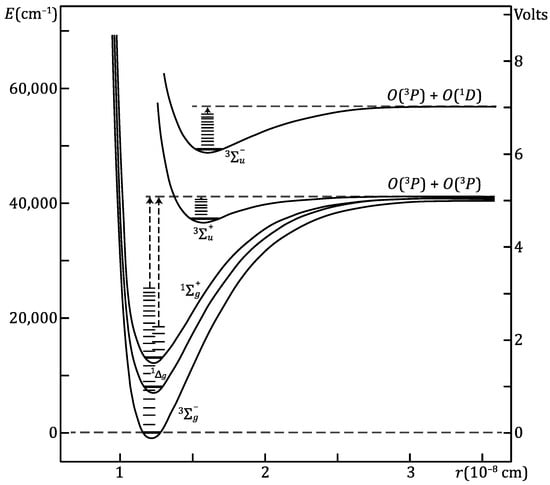
Figure 1
Open AccessArticle
Espresso: A Global Deep Learning Model to Estimate Precipitation from Satellite Observations
by
Léa Berthomier and Laurent Perier
Meteorology 2023, 2(4), 421-444; https://doi.org/10.3390/meteorology2040025 - 26 Sep 2023
Cited by 1
Abstract
Estimating precipitation is of critical importance to climate systems and decision-making processes. This paper presents Espresso, a deep learning model designed for estimating precipitation from satellite observations on a global scale. Conventional methods, like ground-based radars, are limited in terms of spatial coverage.
[...] Read more.
Estimating precipitation is of critical importance to climate systems and decision-making processes. This paper presents Espresso, a deep learning model designed for estimating precipitation from satellite observations on a global scale. Conventional methods, like ground-based radars, are limited in terms of spatial coverage. Satellite observations, on the other hand, allow global coverage. Combined with deep learning methods, these observations offer the opportunity to address the challenge of estimating precipitation on a global scale. This research paper presents the development of a deep learning model using geostationary satellite data as input and generating instantaneous rainfall rates, calibrated using data from the Global Precipitation Measurement Core Observatory (GPMCO). The performance impact of various input data configurations on Espresso was investigated. These configurations include a sequence of four images from geostationary satellites and the optimal selection of channels. Additional descriptive features were explored to enhance the model’s robustness for global applications. When evaluated against the GPMCO test set, Espresso demonstrated highly accurate precipitation estimation, especially within equatorial regions. A comparison against six other operational products using multiple metrics indicated its competitive performance. The model’s superior storm localization and intensity estimation were further confirmed through visual comparisons in case studies. Espresso has been incorporated as an operational product at Météo-France, delivering high-quality, real-time global precipitation estimates every 30 min.
Full article
(This article belongs to the Special Issue Early Career Scientists' (ECS) Contributions to Meteorology (2023))
►▼
Show Figures

Figure 1
Open AccessArticle
No City Left Behind: Building Climate Policy Bridges between the North and South
by
Mohamed Hachaichi
Meteorology 2023, 2(3), 403-420; https://doi.org/10.3390/meteorology2030024 - 05 Sep 2023
Abstract
Cities are progressively heightening their climate aspirations to curtail urban carbon emissions and establish a future where economies and communities can flourish within the Earth’s ecological limits. Consequently, numerous climate initiatives are being launched to control urban carbon emissions, targeting various sectors, including
[...] Read more.
Cities are progressively heightening their climate aspirations to curtail urban carbon emissions and establish a future where economies and communities can flourish within the Earth’s ecological limits. Consequently, numerous climate initiatives are being launched to control urban carbon emissions, targeting various sectors, including transport, residential, agricultural, and energy. However, recent scientific literature underscores the disproportionate distribution of climate policies. While cities in the Global North have witnessed several initiatives to combat climate change, cities in the Global South remain uncovered and highly vulnerable to climate hazards. To address this disparity, we employed the Balanced Iterative Reducing and Clustering using the Hierarchies (BRICH) algorithm to cluster cities from diverse geographical areas that exhibit comparable socioeconomic profiles. This clustering strives to foster enhanced cooperation and collaboration among cities globally, with the goal of addressing climate change in a comprehensive manner. In summary, we identified similarities, patterns, and clusters among peer cities, enabling mutual and generalizable learning among worldwide peer-cities regarding urban climate policy exchange. This exchange occurs through three approaches: (i) inner-mutual learning, (ii) cross-mutual learning, and (iii) outer-mutual learning. Our findings mark a pivotal stride towards attaining worldwide climate objectives through a shared responsibility approach. Furthermore, they provide preliminary insights into the implementation of “urban climate policy exchange” among peer cities on a global scale.
Full article
(This article belongs to the Special Issue Early Career Scientists' (ECS) Contributions to Meteorology (2023))
►▼
Show Figures
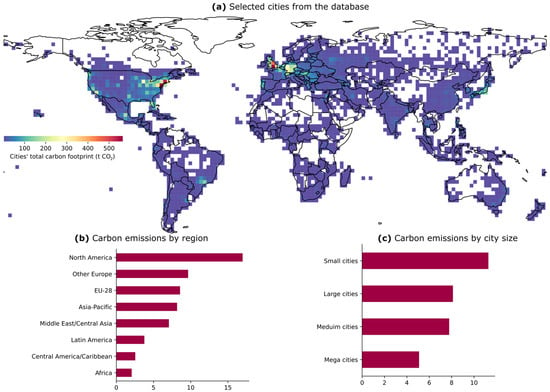
Figure 1
Open AccessArticle
Characteristics of Convective Parameters Derived from Rawinsonde and ERA5 Data Associated with Hailstorms in Northeastern Romania
by
Vasilică Istrate, Dorin Podiuc, Dragoș Andrei Sîrbu, Eduard Popescu, Emil Sîrbu and Doru Dorian Popescu
Meteorology 2023, 2(3), 387-402; https://doi.org/10.3390/meteorology2030023 - 23 Aug 2023
Abstract
Using a database of 378 hail days between 1981 and 2020, the climatic characteristics of 23 convective parameters from sounding data and ERA5 data were statistically analysed. The goal of this work is to evaluate the usefulness and representativeness of convective parameters derived
[...] Read more.
Using a database of 378 hail days between 1981 and 2020, the climatic characteristics of 23 convective parameters from sounding data and ERA5 data were statistically analysed. The goal of this work is to evaluate the usefulness and representativeness of convective parameters derived from sounding data and reanalysis data for the operational forecast of the hail phenomenon. As a result, the average values from 12:00 UTC were 433 J/kg for CAPE in the case of data from ERA5 and 505 J/kg from rawinsonde, respectively. The Spearman correlation coefficient matrix between the values of the parameters indicates high correlations among the parameters calculated based on the parcel theory, humidity indices, and the complex indices. The probability for large hail increases with high values of low-level and boundary-layer moisture, high CAPE, and a high lifting condensation level (LCL) height.
Full article
(This article belongs to the Special Issue Early Career Scientists' (ECS) Contributions to Meteorology (2023))
►▼
Show Figures
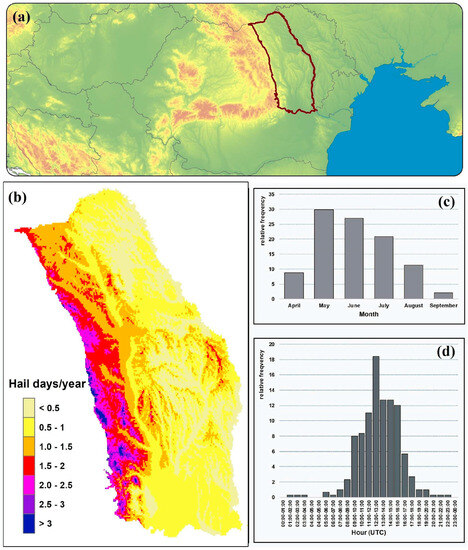
Figure 1
Open AccessArticle
Airstream Association of Large Boundary Layer Rolls during Extratropical Transition of Post-Tropical Cyclone Sandy (2012)
by
James A. Schiavone
Meteorology 2023, 2(3), 368-386; https://doi.org/10.3390/meteorology2030022 - 07 Aug 2023
Abstract
►▼
Show Figures
Better understanding of roll vortices that often occur in the tropical cyclone (TC) boundary layer is required to improve forecasts of TC intensification and the granularity of damaging surface winds. It is especially important to characterize rolls over a wide variety of TCs,
[...] Read more.
Better understanding of roll vortices that often occur in the tropical cyclone (TC) boundary layer is required to improve forecasts of TC intensification and the granularity of damaging surface winds. It is especially important to characterize rolls over a wide variety of TCs, their environments, and TC development phases. Boundary layer rolls have been observed in TCs since 1998, but only recently in a TC during its extratropical transition phase. The work reported herein is the first to analyze how boundary layer rolls are distributed among the extratropical features of a transitioning TC. To this end, routine and special operational observations recorded during landfalling Post-tropical Cyclone Sandy (2012) were leveraged, including radar, surface, rawinsonde, and aircraft reconnaissance observations. Large rolls occurred in cold airstreams, both in the cold conveyor belt within the northwestern storm quadrant and in the secluding airstream within the northeastern quadrant, but roll presence was much diminished within the intervening warm sector. The large size of the rolls and their confinement to cold airstreams is attributed to an optimum inflow layer depth, which is deep enough below a strong stable layer to accommodate deep and strong positive radial wind shear to promote roll growth, yet not so deep as to limit radial wind shear magnitude, as occurred in the warm sector.
Full article
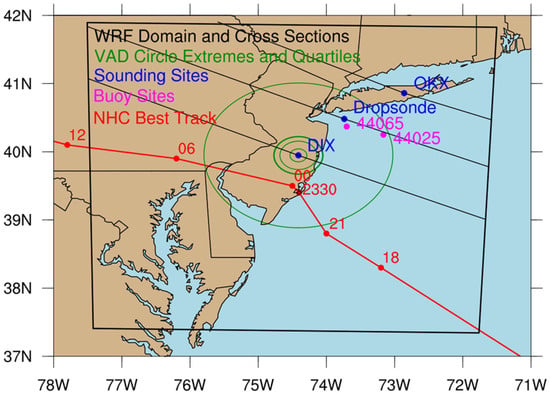
Figure 1
Open AccessArticle
Reliability of Extreme Wind Speeds Predicted by Extreme-Value Analysis
by
Nicholas John Cook
Meteorology 2023, 2(3), 344-367; https://doi.org/10.3390/meteorology2030021 - 31 Jul 2023
Cited by 1
Abstract
►▼
Show Figures
The reliability of extreme wind speed predictions at large mean recurrence intervals (MRI) is assessed by bootstrapping samples from representative known distributions. The classical asymptotic generalized extreme value distribution (GEV) and the generalized Pareto (GPD) distribution are compared with a contemporary sub-asymptotic Gumbel
[...] Read more.
The reliability of extreme wind speed predictions at large mean recurrence intervals (MRI) is assessed by bootstrapping samples from representative known distributions. The classical asymptotic generalized extreme value distribution (GEV) and the generalized Pareto (GPD) distribution are compared with a contemporary sub-asymptotic Gumbel distribution that accounts for incomplete convergence to the correct asymptote. The sub-asymptotic model is implemented through a modified Gringorten method for epoch maxima and through the XIMIS method for peak-over-threshold values. The mean bias error is shown to be minimal in all cases, so that the variability expressed by the standard error becomes the principal reliability metric. Peak-over-threshold (POT) methods are shown to always be more reliable than epoch methods due to the additional sub-epoch data. The generalized asymptotic methods are shown to always be less reliable than the sub-asymptotic methods by a factor that increases with MRI. This study reinforces the previously published theory-based arguments that GEV and GPD are unsuitable models for extreme wind speeds by showing that they also provide the least reliable predictions in practice. A new two-step Weibull-XIMIS hybrid method is shown to have superior reliability.
Full article

Figure 1
Open AccessArticle
Influence of Underlying Topography on Post-Monsoon Cyclonic Systems over the Indian Peninsula
by
Jayesh Phadtare
Meteorology 2023, 2(3), 329-343; https://doi.org/10.3390/meteorology2030020 - 31 Jul 2023
Abstract
During the post-monsoon cyclone season, the landfalls of westward-moving cyclonic systems often lead to extreme rainfall over the east coast of the Indian peninsula. A stationary cyclonic system over the coast can produce heavy rainfall for several days and cause catastrophic flooding. This
[...] Read more.
During the post-monsoon cyclone season, the landfalls of westward-moving cyclonic systems often lead to extreme rainfall over the east coast of the Indian peninsula. A stationary cyclonic system over the coast can produce heavy rainfall for several days and cause catastrophic flooding. This study analyzes the dynamics of a propagating and stationary cyclonic system over the east coast, highlighting the possible cause behind the stagnation. The vorticity budgets of these two systems are presented using a reanalysis dataset. Vortex stretching and horizontal vorticity advection were the dominant terms in the budget. Vertical advection and tilting terms were significant over the orography. The horizontal advection of vorticity was positive (negative) on the western (eastern) side of the systems and, thus, favored westward propagation. Vortex stretching was confined to the upstream of orography in the stationary vortex. In the propagating vortex, the vortex stretching occurred over the orography during its passage. Data from the radiosonde soundings over a coastal station showed orographic blocking of the low-level winds in the stationary case. Conversely, the flow crossed the orographic barrier in the propagating case. Thus, the predominance of the upstream orographic convergence over the vortex circulation can be the reason for system stagnation over the coast.
Full article
(This article belongs to the Special Issue Early Career Scientists' (ECS) Contributions to Meteorology (2023))
►▼
Show Figures
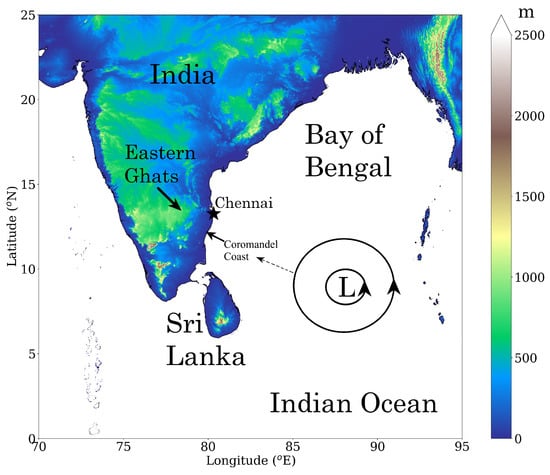
Figure 1
Open AccessArticle
Why Above-Average Rainfall Occurred in Northern Northeast Brazil during the 2019 El Niño?
by
Felipe M. de Andrade, Victor A. Godoi and José A. Aravéquia
Meteorology 2023, 2(3), 307-328; https://doi.org/10.3390/meteorology2030019 - 12 Jul 2023
Abstract
►▼
Show Figures
El Niño is generally associated with negative rainfall anomalies (below-average rainfall) in northern Northeast Brazil (NNEB). In 2019, however, the opposite rainfall pattern was observed during an El Niño episode. Here, we explore the mechanisms that overwhelmed typical El Niño-related conditions and resulted
[...] Read more.
El Niño is generally associated with negative rainfall anomalies (below-average rainfall) in northern Northeast Brazil (NNEB). In 2019, however, the opposite rainfall pattern was observed during an El Niño episode. Here, we explore the mechanisms that overwhelmed typical El Niño-related conditions and resulted in positive rainfall anomalies (above-average rainfall) in NNEB. We focus on the austral autumn when El Niño is most prone to rainfall anomalies in the region. The analysis of several datasets, including weather station data, satellite data, reanalysis data, and modelled data derived from a dry linear baroclinic model, allowed us to identify that the austral autumn 2019 above-average rainfall in NNEB was likely associated with four combined factors; these are (1) the weak intensity of the 2019 El Niño; (2) the negative phase of the Atlantic Meridional Mode; (3) local and remote diabatic heating anomalies, especially over the western South Pacific and tropical South Atlantic, which resulted in anticyclonic and cyclonic circulations in the upper and lower troposphere, respectively, over the tropical South Atlantic; and (4) sub-seasonal atmospheric convection anomalies over the western South Pacific, which reinforced the low-frequency convection signal over that region. This latter factor suggests the influence of the Madden–Julian Oscillation on rainfall in NNEB during the first ten days of March 2019. We discuss these mechanisms in detail and provide evidence that, even during an El Niño event, above-average rainfall in NNEB in the austral autumn may occur, and its modulation is not limited to the influence of a single climate phenomenon. Our results may assist in the planning of several crucial activities, such as water resources management and agriculture.
Full article

Figure 1
Open AccessReview
Cloudiness Parameterization for Use in Atmospheric Models: A Review and New Perspectives
by
Rae-Seol Park and Song-You Hong
Meteorology 2023, 2(3), 295-306; https://doi.org/10.3390/meteorology2030018 - 22 Jun 2023
Abstract
►▼
Show Figures
In atmospheric models, the representation of cloudiness is a direct linkage between the moisture amount and associated radiative forcing. This paper begins by providing a review of the parameterization of cloudiness that has been used for numerical weather predictions and climate studies. The
[...] Read more.
In atmospheric models, the representation of cloudiness is a direct linkage between the moisture amount and associated radiative forcing. This paper begins by providing a review of the parameterization of cloudiness that has been used for numerical weather predictions and climate studies. The inherent uncertainties in representing a partial fraction of clouds for radiation feedback and in evaluating it against the corresponding observations are focused. It is also stated that the major hydrometeor categories of water substances such as cloud ice and water that are responsible for cloud cover are readily available in modern weather and climate models. Inconsistencies in cloud cover and hydrometeors, even in the case of the prognostic method, are discussed. The compensating effect of cloudiness for radiative feedback is found to imply that the condensed water amount itself is more influential on the radiative forcing, rather than the accuracy of the cloudiness. Based on the above perspectives, an alternative diagnostic parameterization method is proposed, utilizing a monotonic relation between the cloud water amounts and cloudiness that are obtained from aircraft and satellite observations. The basic premise of this approach lies in the accuracy of the water substance in the models, indicating that future efforts need to be given to improvements in physical processes concerning hydrometeor properties for the accurate representation of cloud radiative feedback.
Full article
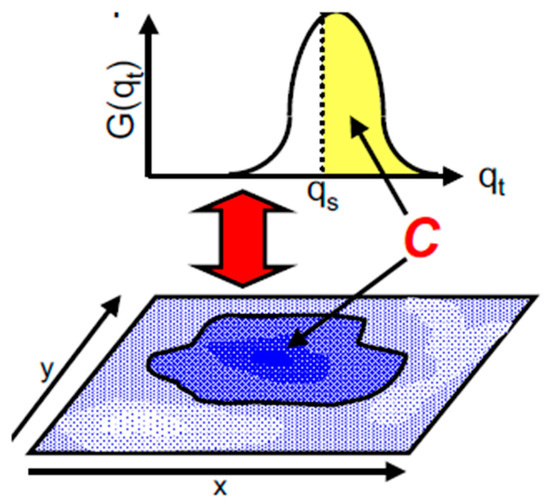
Figure 1
Highly Accessed Articles
Latest Books
E-Mail Alert
News
Topics

Conferences
Special Issues
Special Issue in
Meteorology
Early Career Scientists' (ECS) Contributions to Meteorology (2024)
Guest Editor: Edoardo BucchignaniDeadline: 31 October 2024


